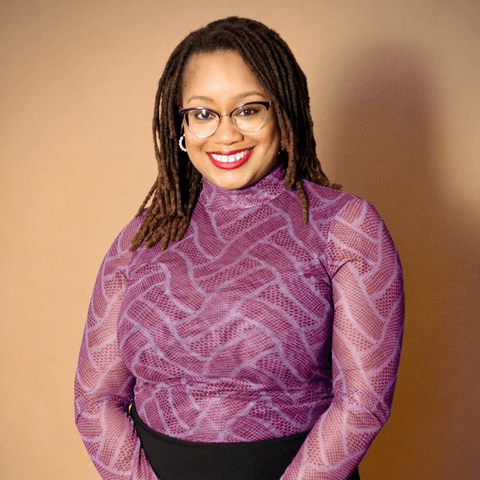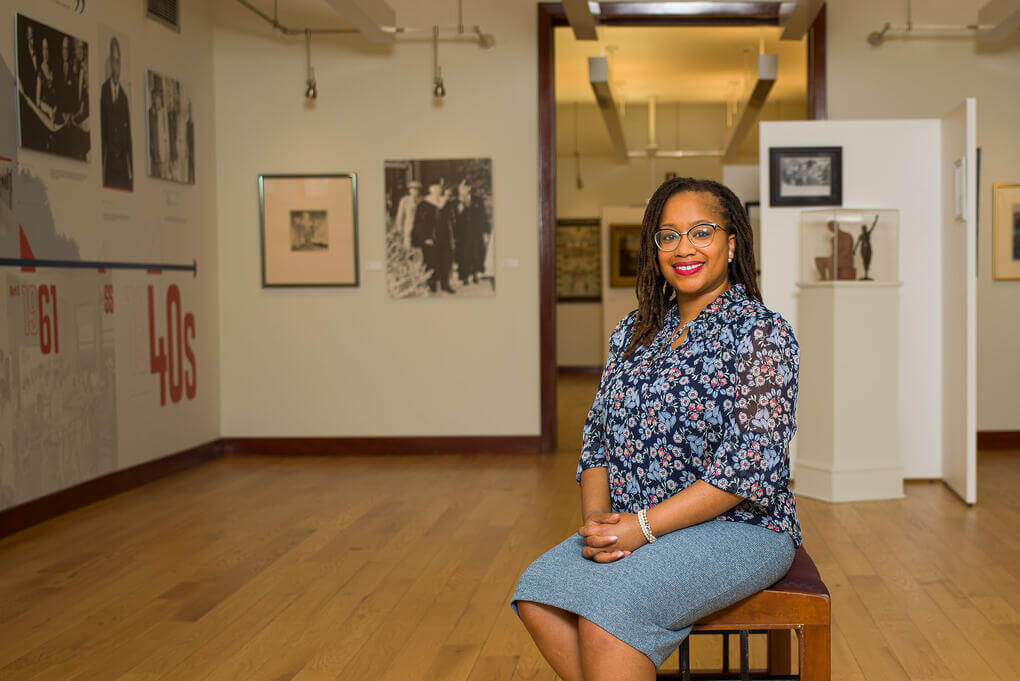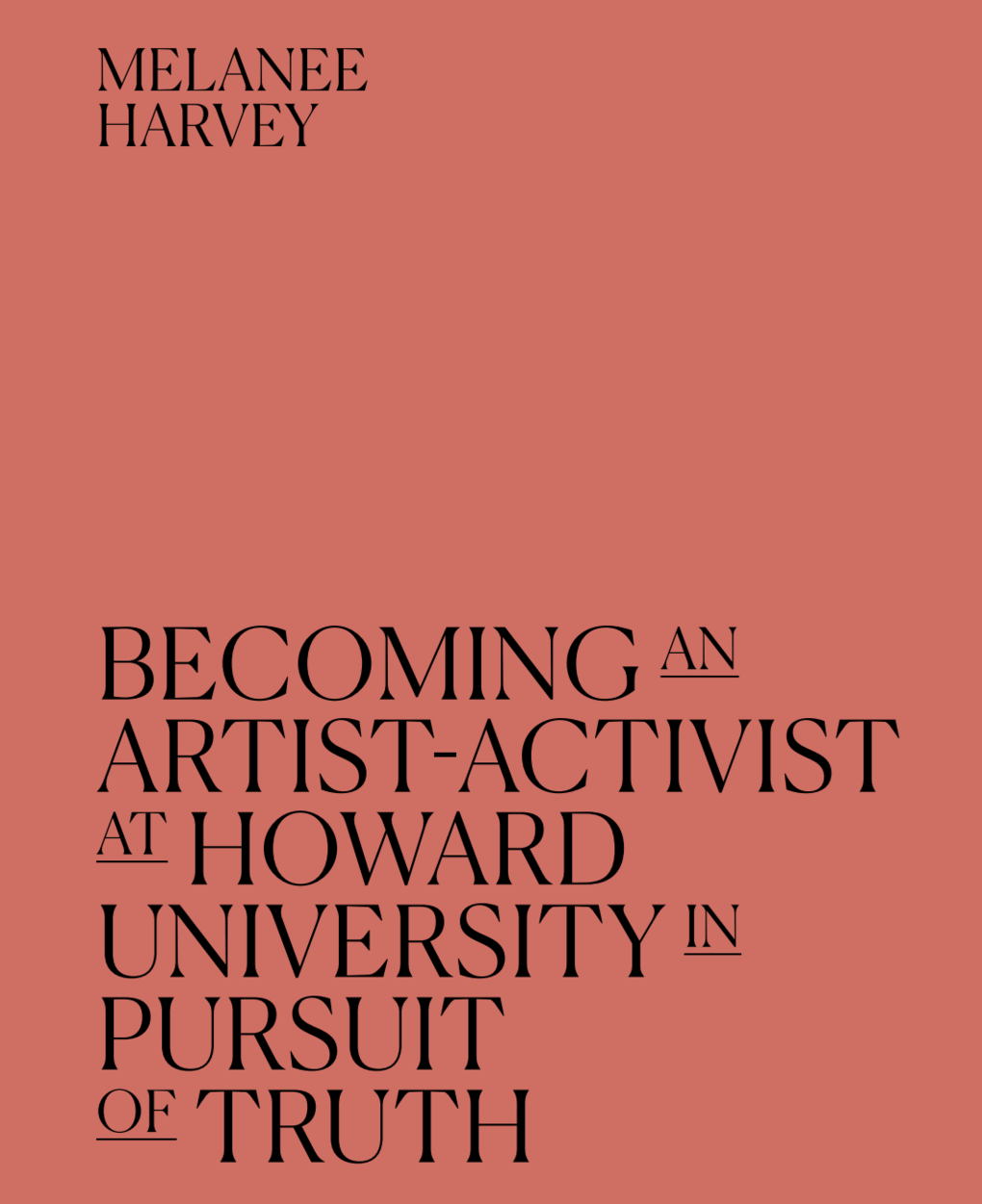A Servant Scholar: Dr. Melanee Harvey on Art, Legacy, and Service at Howard

By Chad Eric Smith, Director of Marketing & Communications, Chadwick A. Boseman College of Fine Arts
Header Image: “Formal Garden” by Julian Francis Abele (American, 1881 - 1950)
Featured Image: Dr. Melanee Harvey
I sat down to interview Dr. Melanee Harvey without expectations. I just wanted to listen; to understand her background, her purview, and the kind of impact she intends to make on the students at Howard University’s Chadwick A. Boseman College of Fine Arts (CABCoFA). What I experienced was a scholar who frames art history not as a narrow discipline but as a practice of service, one that moves between the sacred and the secular, the classroom and the community, the archive and the everyday.
“I’m an art historian, but the term is probably a little deceptive,” Harvey said. “Not only am I actively engaged in academic scholarship, which means I’m in archives finding new stories to be told about Black art, but I’m also doing programming and connecting students with some of the best artists defining what art is right now. And then I’m also writing for other scholars, art professionals, and teachers so that when we learn about art, it isn’t a narrow concept that is exclusionary. It’s something that is inclusive.”
Talking With Students, Talking With Colleagues
Harvey explains her work differently depending on the audience. To a high school student, she says she would simply describe herself as an art historian engaged in research, programming, and connecting them to practicing artists.
With colleagues, however, the framing shifts. Though not a Howard graduate—she studied at Spelman College as an undergraduate and later earned her graduate degree at Boston University—Harvey said, “From my freshman year I knew Howard was the literal ‘Mecca’ for African American art history.” She points to James A. Porter, whom she calls the “Father of African American Art History,” as the first to write a textbook suitable for academic instruction. For Harvey, that legacy is personal. She sees herself as upholding Howard’s deep historical roots by publishing widely and by embodying the model of a public intellectual—like Porter—who reminded the broader public of art’s role in shaping life.
“And I would say that’s important because the world we live in is so driven by images,” she added. “Whether you’re scrolling on Pinterest or Instagram, those foundational critical seeing skills are at the core of what we do in art history.”
Critical Seeing, Empowerment, and Agency
When I asked what she hopes students take from their time with her, Harvey named three essentials without hesitation:
“Criticality, empowerment, and agency. I want students to understand they have the capacity to comment on and critique the world around them. Not only do they have the skills, but I would argue an obligation. We need our students’ voices in the world to make it a better place.”
She also emphasizes resilience. In a building where critique is constant, Harvey wants students to see feedback not as defeat, but as fuel. “I hope students see that not as defeating, but as something they can distill and come back with a punch.”
“And the last thing is humor,” she said. “As creatives we’re trained to take ourselves and what we do seriously, but to make it in this life with longevity we need humor. Reserving a little space for humor is essential.”
Sacred and Secular
The spiritual foundations of Dr. Harvey’s work are deeply rooted in her upbringing. The daughter of a minister, she grew up immersed in the Black church, spending her formative years in Washington, D.C. worship spaces designed by and for Black communities. Yet later, in graduate school, she noticed how rarely those spaces appeared in academic discourse.
“From my earliest moment as a scholar, I was trying to connect my lived experiences in the Black church with an academic statement,” she explained. Her dissertation on the Shrine of the Black Madonna in Detroit examined how art and architecture shaped Black liberation theology—revealing how creative expression became an act of agency for communities defining sacred space on their own terms. Read Dr. Harvey’s peer-reviewed scholarly journal article, “Constructing and Circulating Black Madonnas as Black Power: Charting the Aesthetic and Cultural Influence of Shrine of the Black Madonna” to learn more.
For me, it’s about agency; creatives defining space for ourselves. Art always moves between the secular and the sacred. That’s really where my work lies.
She referenced Gordon Parks’s photography to illustrate this idea. “He created an image of a woman receiving an anointment by layering three negatives into a single photograph. It allows us to see what spiritual transformation can look like physically.”
Dr. Harvey would know. She curated Temples of Hope, Rituals of Survival: Gordon Parks and Black Religious Life, an exhibition on view at the Howard University Museum through December 1, 2025. Presented by the Moorland-Spingarn Research Center, the exhibition features more than 40 works—including selections from the Gordon Parks Legacy Collection acquired by Howard in 2022—that illuminate Parks’s underexplored engagement with faith and spirituality. Together, they reveal how religion and ritual shaped the contours of twentieth-century Black life and modern artistic expression. Learn more by clicking here.
Capitalism, Spectacle, and Resistance
Harvey is clear-eyed about the pressures surrounding art and architecture.
“It’s been painful to see the unique character of D.C. erased with cookie-cutter construction. Developers often bring in artists to placate the community.”
She acknowledges that there are positive collaborations between architects and artists, but she raises deeper questions: Is the artist from the community? Do resources flow back into local ecosystems?
“I know the criticisms, but it’s more exciting to me to think about the future beyond capitalism,” she said. “What happens when we are truly unburdened of this? We are still countering the idea that there’s no money in art. But in truth, artists are often some of the best business people when they’re marketing their work.”
This made me think about how capitalism fractured the organic unity of art and architecture into separate markets, but paradoxically, it sometimes forces them back together, as it creates demand for spectacle: major museums, branded skyscrapers, and cultural centers where art and architecture merge again, though often as symbols of wealth or power.
Dr. Harvey also reflected on how photographers and scholars have had to be careful to avoid turning Black religious practices into spectacle. She noted that audiences often gravitate toward the “moment” — someone shouting or “getting happy” in church — and that can reduce sacred experiences to entertainment. She said her work has been about “thinking through how Black creatives, image producers navigate around spectralizing the body and fetishizing the Black body as well.”
In other words, Dr. Harvey links spectacle to both capitalism’s commodification of art and the risk of sensationalizing Black sacred life, emphasizing the need for representation that avoids exploitation and instead honors depth and meaning. This, of course, takes real intention.
Embodied Service
At the end of our conversation, Harvey returned to why she does this work.
“I really try to embody a servant scholar—someone committed to the visions of the university and the college. That means being vulnerable enough to share my ideas and processes with students and colleagues to enrich the environment. I think of the college as an ecosystem, a biome that constantly shifts with each new class, professor, and course. I just hope I’m the good bacteria that keeps things growing.”
She pointed to the long lineage of Howard art historians—from James Herring to Jeff Donaldson, Tritobia Benjamin, and David Driskell—who modeled what she calls scholarly service, often sacrificing their own productivity for the sake of the department and the college.
My hope is that our students see that example, that their art should be in service to our people, to humanity.
Read Dr. Harvey's Essay Here.


